No matter how good you are at paid search, your campaigns won’t succeed if the offer’s bad.
But who, exactly, is responsible to make sure the offer is successful?
Paid search marketers don’t control the products and services they promote, so it’s hard to ensure the offers are compelling.
Brand managers and business owners aren’t usually familiar with what makes a good offer on the channel, so it can be tough to lead the effort.
With so much else to manage (e.g., campaign buildouts, landing pages, brand compliance, conversion tracking), offer development can become an afterthought.
Or receive no thought at all.
But it doesn’t have to be that way.
Use this process to develop profitable paid search offers that eliminate the pre-launch guesswork and post-launch depression.
1. Determine What You’ll Sell with Paid Search
As a starting point, everyone involved with paid search campaigns needs to be able to answer these questions:
- How does the company make money?
- Which business lines, initiatives, or products will be supported by paid search campaigns?
You’d be surprised how many marketers try to completely automate campaigns without ever really understanding what the business does.
Obviously, this makes it hard to know whether offers are working as well as they could, and what can be improved.
Once you’ve taken inventory of what you’ll be promoting, it’s time to define the offers.
An offer is essentially the thing you sell, the price you sell it for, and the reasons to buy it.
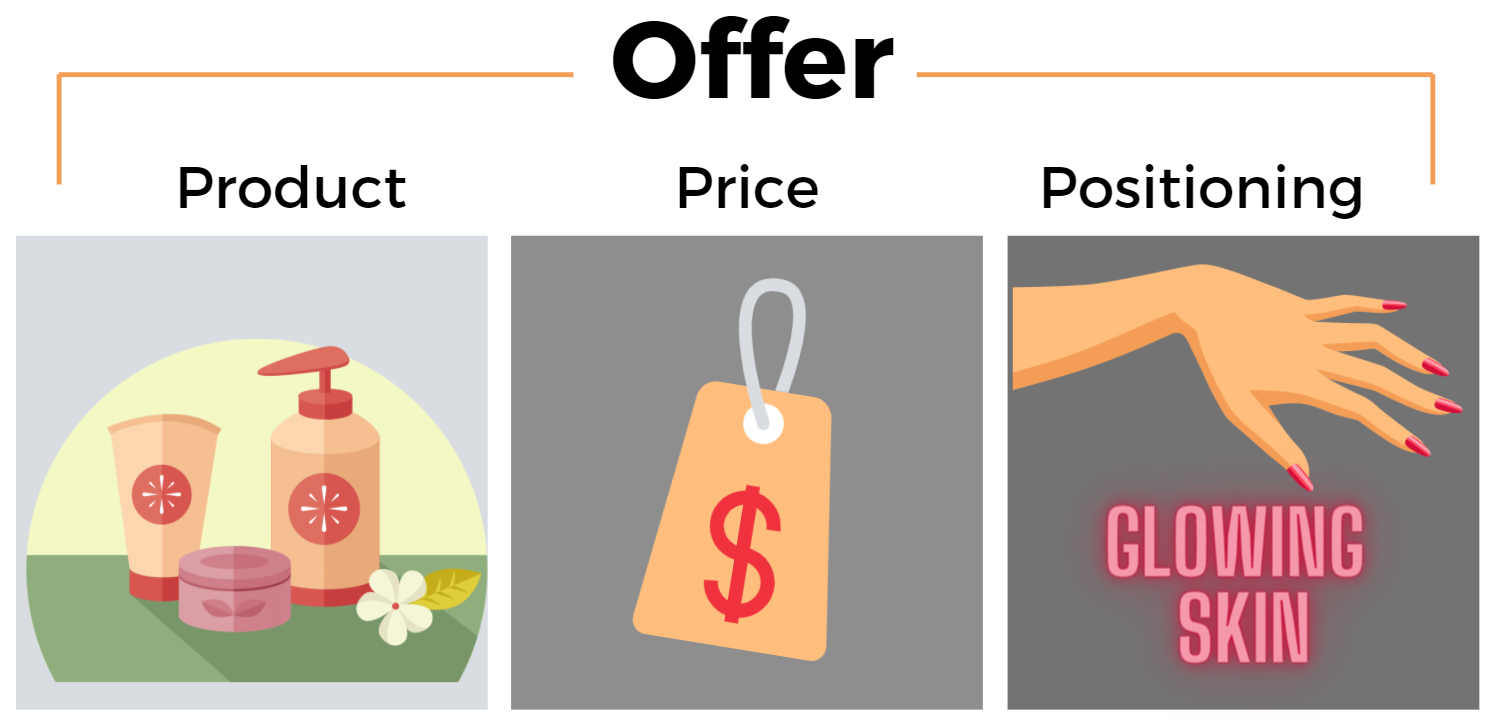
While offers generally make money for the company, your business may promote a separate, introductory offer on paid search that’s different than the primary offer you sell.
For instance, a car dealership’s paid search offer would encourage prospects to explore inventory and schedule a test drive, not to “buy now.”
We’ll cover how to make your offers more attractive to visitors later in the article.
For now, let’s make sure things are set up right internally.
2. Check for Product-Market Fit
You must establish product-market fit before you invest in advertising.
Product-market fit means that your offer solves a problem or meets a need for your audience.
As Randy Komisar explains in this video clip, just because you can make a dog jump doesn’t mean people want a jumping dog.
In fact, “no market need” is the #1 reason most startups fail, according to CB Insights:
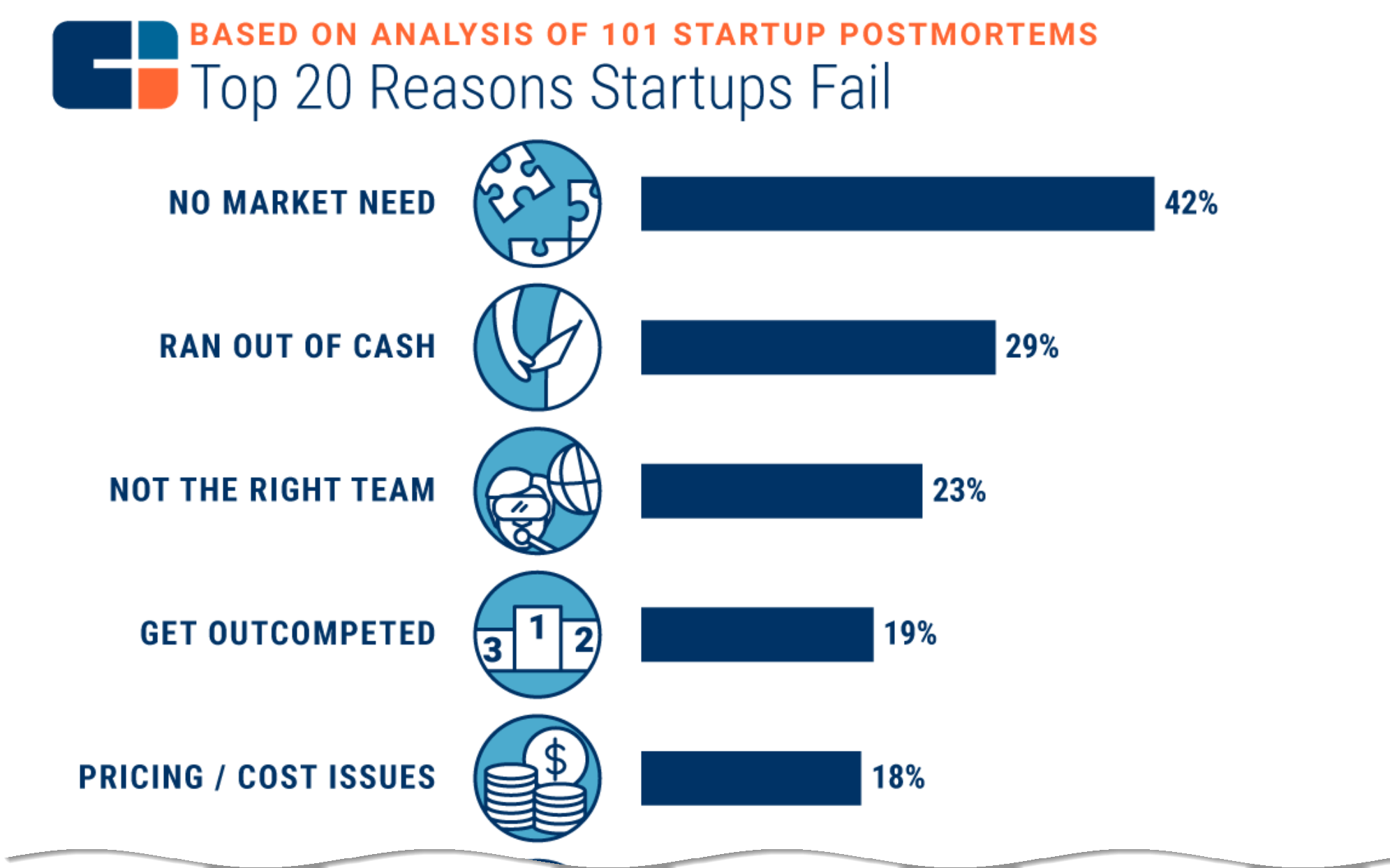
Why do companies invest in ads before validating their offer?
Well, without user feedback, it’s easy to imagine that demand is high and success is inevitable.
But this means that when marketing doesn’t drive sales, the campaigns get blamed, not the offer.
If you’ve decided to use paid search to test the validity of your ideas, your campaign objective should be running strategic experiments, not making a profit.
3. Use MoFu Offers (Or Lower)
What is MoFu?
It may sound like short-hand for bad language, but it’s actually part of the sales funnel:
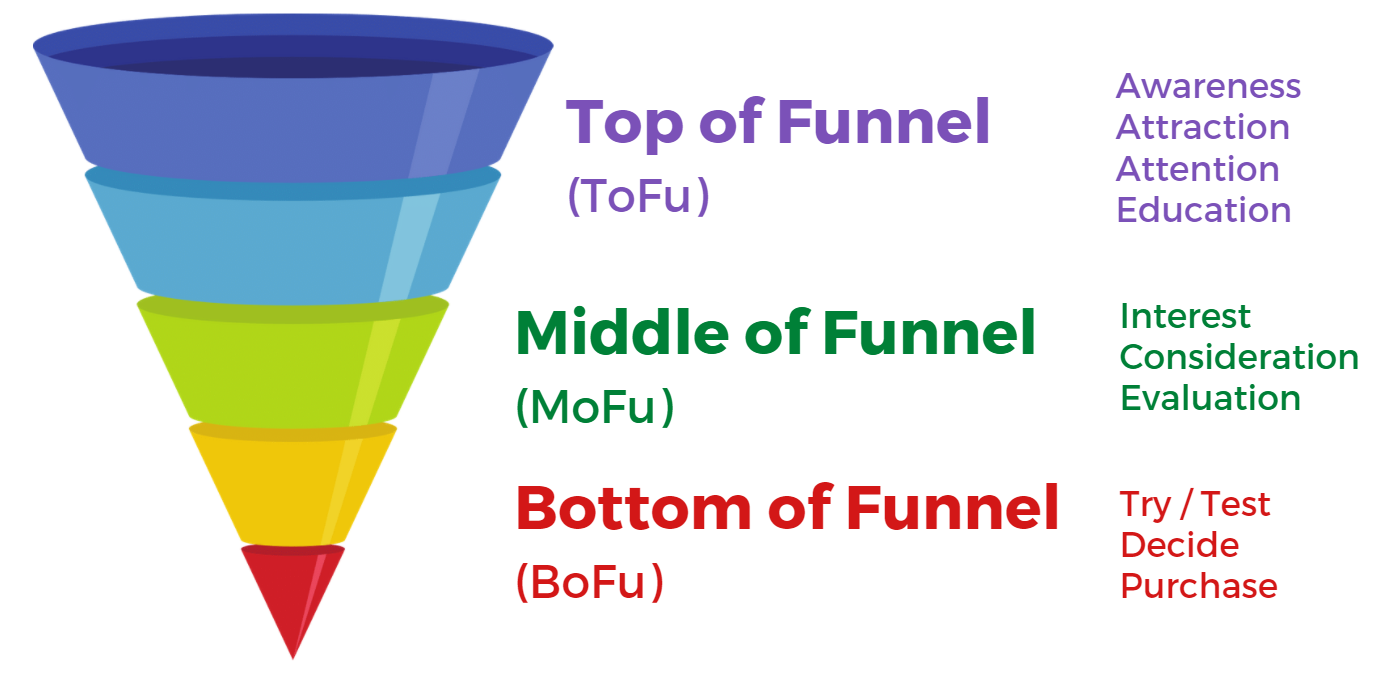
Your paid search offers should be Middle of Funnel (MoFu) or Bottom of Funnel (BoFu).
Top of Funnel (ToFu) resources like infographics and whitepapers are great for awareness and list building.
But when it comes to paid search, this is not where you should focus your efforts.
When someone sees your paid search ad, they’re actively looking for a business like yours.
They can go from never having heard of you to booking an appointment or completing a purchase in just a few clicks.
Because paid search click costs (CPCs) can get expensive, you don’t want to waste those clicks on ToFu efforts attracting people who aren’t ready to do business with you.
So why are so many businesses using paid search to promote unrelated lead magnets and top-of-funnel content?
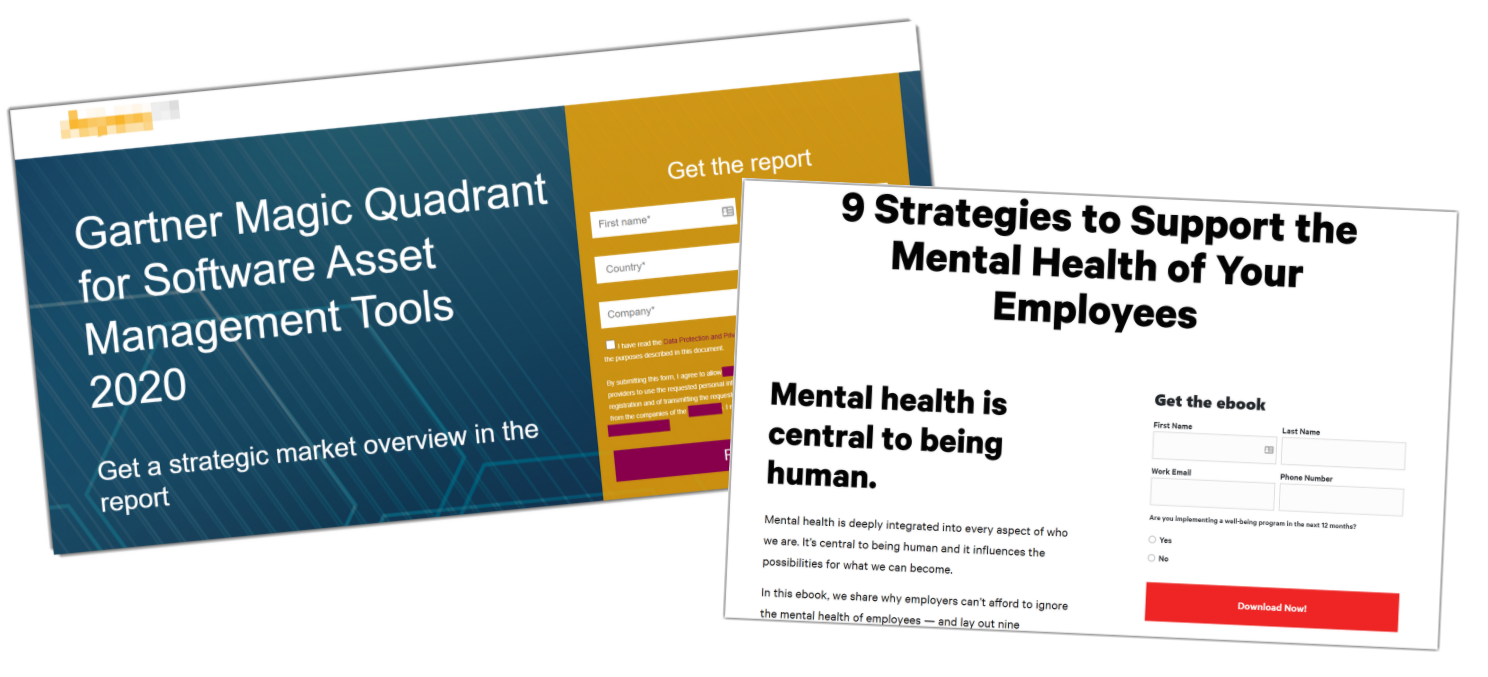
Sometimes marketers favor tradition over optimization (such as this large retailer that kept running newspaper ads despite evidence it was ineffective).
Pure lead generation strategies pre-date the new opportunities of search engine marketing.
In many cases, the answer is simply that the companies didn’t know what else to do.
As we mentioned above, introductory offers are sometimes a better fit for paid search than high-commitment, full-priced pitches.
But don’t confuse a MoFu sales offer with a ToFu freebie designed to grow an email list, or you’ll end up paying a premium for “leads” that flag you as spam and dodge your sales team.
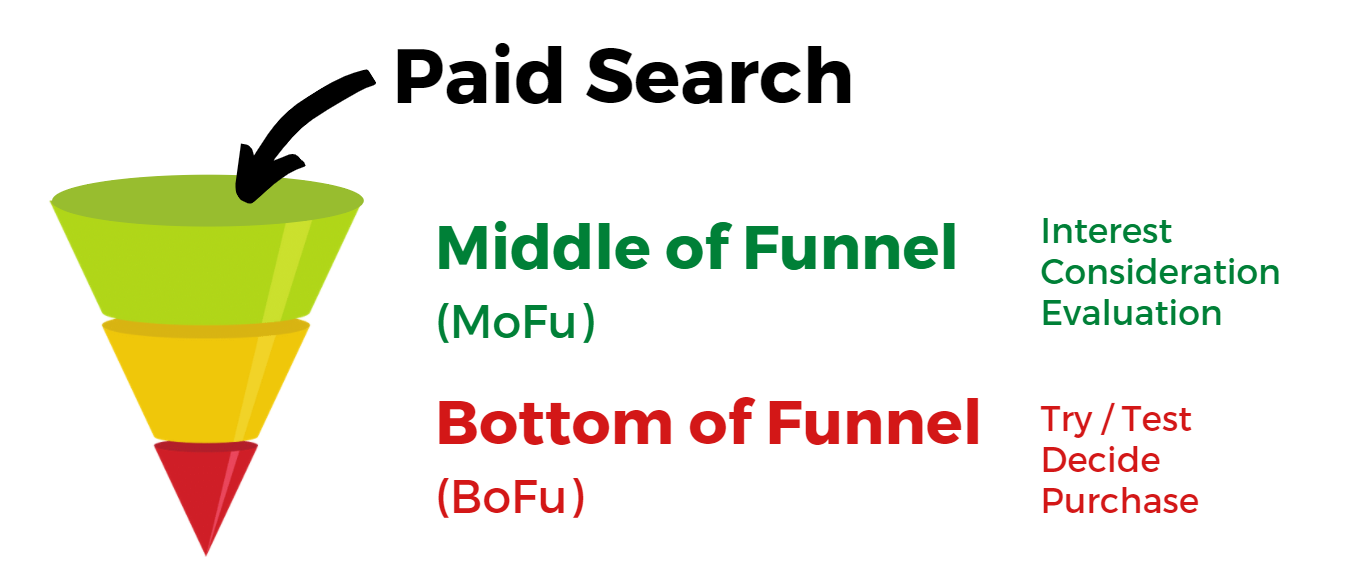
4. Make a Plan to Review Back-End Profits
You need a way to track or measure profitability to confirm that your campaigns are profitable.
That can be tough, honestly.
Profitability isn’t measured on the front-end of marketing campaigns.
Even with ecommerce, where revenue can be calculated instantly, profit isn’t always obvious.
Problem with ROAS: It’s Incomplete
Sure, you can look at Return on Ad Spend (ROAS) as a guide, but that doesn’t include:
- Cost of Goods Sold (COGS).
- Distribution, shipping costs, returns.
- Merchant fees.
- Indirect labor and other expenses.
Without a model for true profit, marketing teams can think they’re working miracles when they’re not breaking even. They’re simply optimizing using the inputs they have.
Problem with Leads: They Aren’t Customers
The calculation gets even more complicated with lead generation offers and subscription models.
Sometimes “profitable” gets confused with “high-converting.”
But conversions don’t measure or even necessarily correlate with sales or profit.
For example, looking at the metrics in this chart, Campaign A is the “winner,” driving the most leads at the lowest cost per lead (CPL).

But a look at the back-end data reveals that high-converting Campaign A is actually only bringing in $0.75 for every $1 it spends on ads.
And we haven’t even factored in any expenses beyond ad spend:

If this example seems far-fetched, look at the Salesforce data of any B2B company.
Most businesses won’t know the exact profit from a conversion in real-time. (Without an integrated CRM tool, companies with a long sales cycle may never know.)
- How can you combat this?
- What reasonable assumptions, estimates, and targets can the marketing team use to optimize and evaluate success on a daily basis?
Create targets and goals using estimates for profitability based on existing inputs, and check your assumptions once you’ve gathered enough data.
5. Use Landing Pages That Specifically Promote Your Offers
Your landing page is the page your visitor sees after clicking your ad, whether that’s a website home page or a dedicated LP.
There’s a lot of debate about which page type is best, but most people overlook a far more important question:
Is the page optimized to drive sales?
Companies of all sizes fail at this.
Let’s look at the biggest mistakes they’re making:
Too Much Content, No Clear Offer
A busy home page with no compelling call-to-action (CTA) is obviously not a great destination for your prospects.
But it still gets used when no other pages have been built out.
I landed on this page from a paid search ad for newsletters:
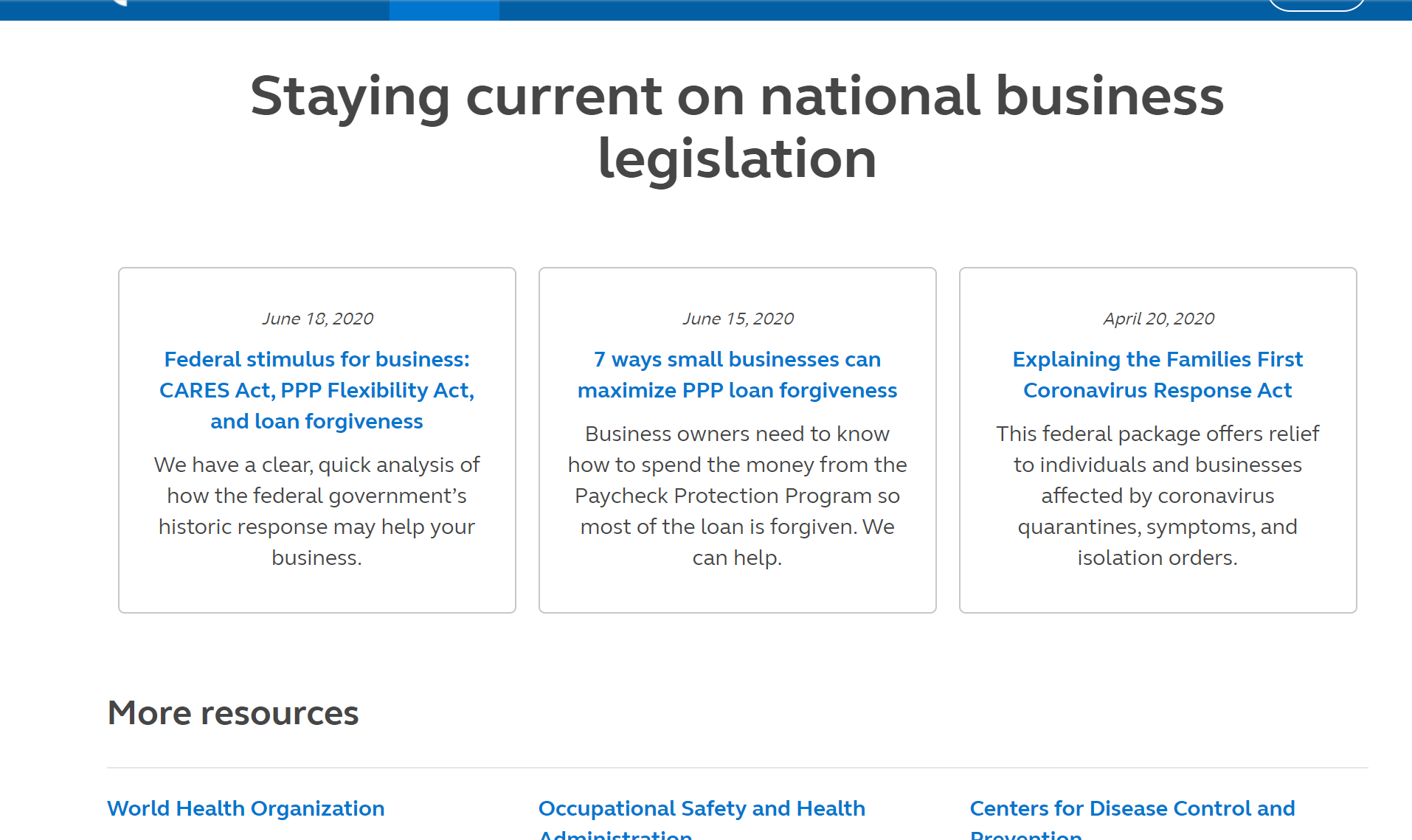
I have no idea what action to take, or how they can help me.
I doubt the company put much thought into answering those questions either.
The problem isn’t that they’re using the home page as a landing page.
The problem is their home page doesn’t help me learn about their offers or take action.
As a note, pages like this can have extremely high conversion rates when conversions have been set to count all “page visits.”
This keeps the campaigns running (unprofitably) for months and years.
Not Enough Content, No Clear Offer
Another common landing page mistake is using lead capture forms as landing pages without communicating the value of engaging with you.
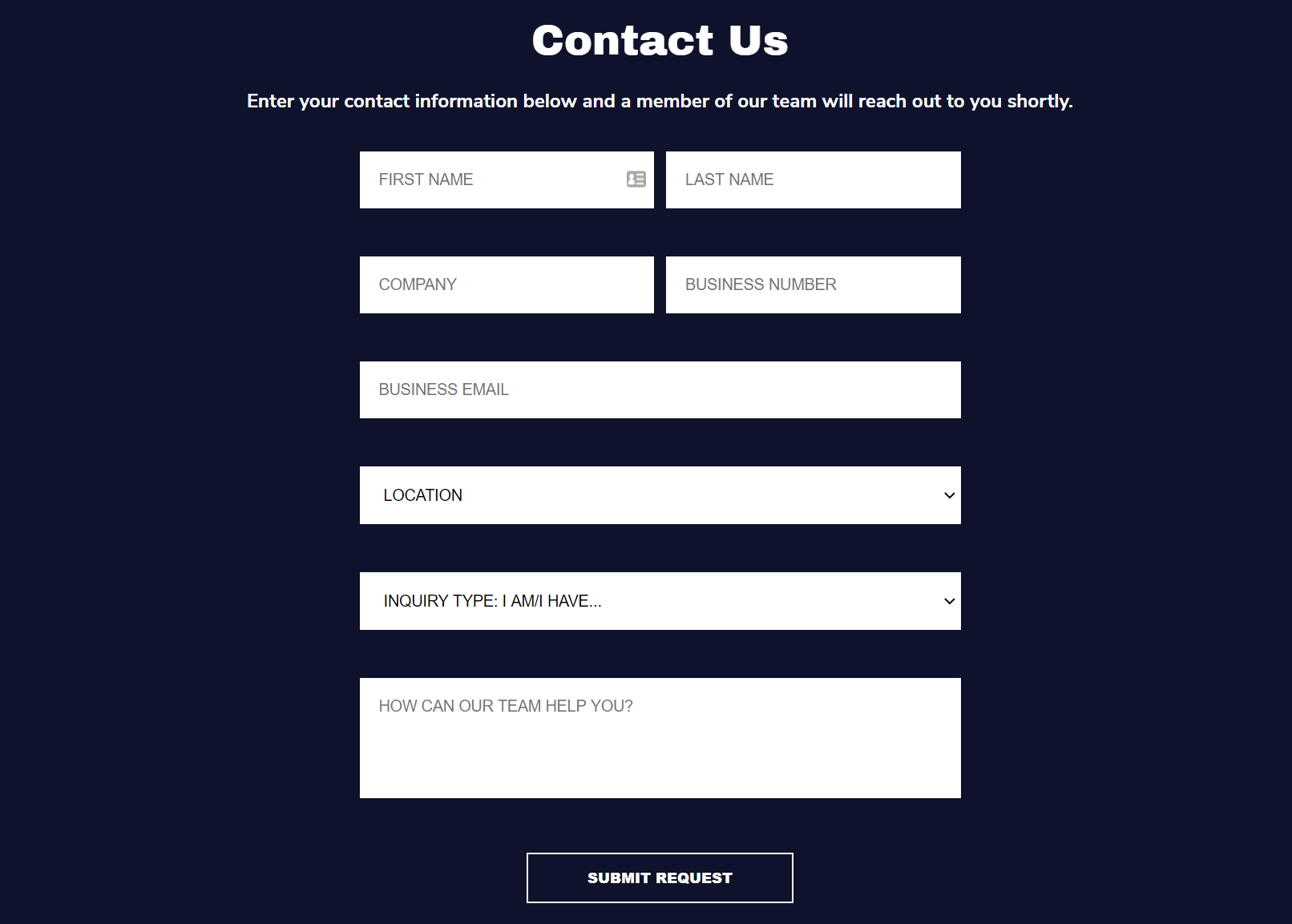
This can happen when the brand needs to drive leads, but is concerned about “incentivizing” form-fills and getting low-qualified leads.
If your landing page functions as an intake form but doesn’t motivate visitors to act, you’re losing valuable prospects that you just paid good money to reach.
You don’t need to bribe someone to complete your form, but you should position your business as a strong solution to their problem.
Now let’s look at how to do that.
6. Strengthen the 3 Ps of Your Offer
Just so we’re all on the same page, the 3 Ps are:
- Product.
- Price.
- Positioning
Now that you’re set up for success with products and measurement, it’s time to heighten your visitors’ desire to take action.
Even after your ad wins the click on Google, it’s not quite so easy to win new business.
Your prospect is researching solutions, and they can see there are other companies (possibly billions of them) that can also solve their problems.

So how do you help them understand why choosing you is better than choosing the alternatives they’re comparing you against?
There’s good news:
Contrary to popular belief, strengthening your offer doesn’t require discounting or adding bonuses.
It means finding ways to make your offer more desirable across those three key factors of product, price, and positioning.
Product
You typically won’t make changes to the product itself.
But how can you help your market experience it, taste it, take it on a test drive, or know it solves their problem?

A few ideas to get you started:
- If you’re selling a course, give access to a free lesson.
- If you’re selling consulting services, offer a free mini-consultation.
- If you’re selling in-person services, create a “reel” or a demo showing the process.
- If you’re selling a physical product, show the product in action with images and videos.
Make sure that the experience really is easy for your visitor.
A free trial of your SaaS product that takes several hours of onboarding could be a turn-off for prospects who just want to understand how it works.
In addition to giving your audience a way to engage with your offer, be sure to include product features, benefits and outcomes in detail!
A confused mind says “no,” so don’t make them guess or hunt for essential product information.
Price
Most MoFu offers will be free or low-cost.
Here are some tips and pricing strategies that matter to your market:
- Pay attention to the Weber-Fechner law of pricing. Saving $25 on a $50 item feels like a great deal. Saving $25 on a $10,000 feels insulting.
- Versioning lets you provide pricing options without discounting.
- Warranties and guarantees protect and justify your prospect’s investment.
Positioning
Positioning is a powerful marketing concept that involves how your audience views you compared to your competitors.

Blue ocean companies, take note: on search engines, your competitors are the companies vying for the position, even if they’re not considered direct competitors otherwise.
You can use Auction Insights data to see which businesses are overlapping you in the auctions where your ad is showing.
I always like to go beyond that and document the actual landing pages and offers they’re using.
This can provide valuable insight into the competitive landscape and the options prospects are comparing.
For as basic as this seems, when I show my clients what their competition is doing, it’s almost always a light bulb moment for them.
It’s so easy to think about competition in the abstract, without considering the specific promises they’re making to your target customers.
Review your competition and adjust your messaging to address the claims and implications from competitor LPs.
Conclusion
Creating profitable paid search offers is a skill that eludes many advertisers.
Let’s change that.
Review these questions with your team so that everyone can contribute to building offers that turn searchers into clients and customers.
- What are we selling with paid search?
- Are we sure we have product-market fit?
- Are we using MoFu and/or BoFu offers?
- How do we know if we’re profitable?
- Do our LPs specifically promote what we’re selling?
- How can we strengthen our offers?
More Resources:
- 8 Simple Google Ads Tips That Will Make You More Money
- 5 Innovative PPC Tactics to Try Today
- Which PPC Metrics Should You Focus On?
Image Credits
Featured Image: Canva
In-Post Images: Canva
All screenshots and graphics taken/created by author, August 2020


